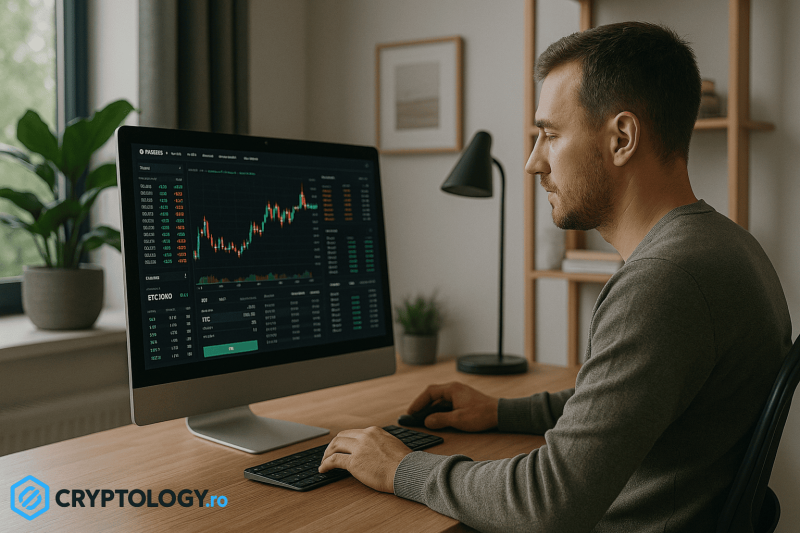Understanding the Landscape of Crypto Trading Platforms
The rapid evolution of cryptocurrency over the past decade has introduced a wave of technological innovation, financial speculation, and new paradigms of economic participation.
With Bitcoin’s debut in 2009 and the subsequent emergence of thousands of other digital assets, the need for secure, efficient, and user-friendly trading platforms has become paramount. For both novice investors and seasoned traders, choosing the right crypto exchange is a decision that can significantly impact profitability, security, and overall experience.
Crypto trading platforms serve as the interface between users and blockchain infrastructure. They facilitate buying, selling, and holding digital assets while often offering additional services like staking, lending, derivatives, and educational resources. However, not all platforms are created equal.
Differences in security protocols, fees, asset availability, user interface, and regulatory compliance can result in vastly different user experiences. Thus, understanding the nuances of these platforms is crucial for anyone intending to engage with digital currencies in a meaningful way.
Criteria for Evaluating a Crypto Trading Platform
Before delving into specific examples, it’s essential to identify the primary factors that distinguish an exceptional crypto trading platform from a mediocre or even risky one.
First and foremost is security. The decentralized nature of cryptocurrencies, while offering autonomy, also exposes users to risks like hacks and fraud if the exchange lacks robust protective measures. Two-factor authentication (2FA), cold storage of funds, insurance against breaches, and regulatory adherence are indicators of a platform’s commitment to safeguarding user assets.
Equally important is usability. A clean, intuitive interface can be the difference between a seamless trading experience and one marred by confusion and errors. This includes the availability of mobile apps, trading charts, order types, and support for fiat currencies. The best platforms cater to both beginners and experts, offering simple buy/sell options as well as advanced trading tools like limit orders, stop-loss functions, and integration with trading bots.
Liquidity is another key component. High liquidity ensures that trades can be executed quickly at predictable prices without drastic slippage. Platforms with large user bases and substantial daily trading volumes are generally more liquid, which contributes to market efficiency and reduced risk for traders.
The fee structure must also be examined. Some exchanges offer zero or low trading fees but compensate through spreads or withdrawal fees. Transparency in fee structures helps users anticipate costs and optimize their strategies.
Finally, regulatory compliance and customer support capabilities can greatly affect user trust and the longevity of a platform.
Industry Leaders: A Comparative Overview
Among the plethora of trading platforms available today, a few names stand out due to their market share, innovation, and reliability. Binance, for instance, is often cited as the largest global exchange by trading volume. It offers a vast array of cryptocurrencies, low fees, and advanced trading features.
However, it has faced regulatory challenges in various jurisdictions, making it a less optimal choice for users in certain countries.
Coinbase, on the other hand, is widely recognized for its regulatory compliance and ease of use. Based in the United States and listed on the NASDAQ, Coinbase is particularly appealing to beginners due to its simple interface and robust educational content. However, it typically charges higher fees than its competitors and has a more limited selection of altcoins.
Kraken is another reputable option, known for its strong security protocols and global reach. It supports both fiat and crypto deposits and offers futures trading for more advanced users.
Meanwhile, platforms like KuCoin and Bitfinex appeal to users seeking exposure to a broader range of tokens and more sophisticated trading tools, including margin trading.
Emerging platforms like Bybit and OKX are gaining traction for their focus on derivatives and competitive fee structures. These platforms cater primarily to experienced traders looking for leverage and innovative products. They have also invested heavily in educational resources and community engagement, which adds to their credibility.
Regional and Niche Solutions
Aside from global giants, there are numerous regional and niche trading platforms tailored to specific markets or user needs. For example, platforms like Bitstamp and Gemini have carved out reputations for regulatory strictness and institutional-grade infrastructure, making them ideal for European and North American users who prioritize compliance.
In Asia, exchanges such as Huobi and Gate.io have developed extensive ecosystems that include token launches, DeFi access, and cross-chain interoperability. Localized support, native language options, and integrations with regional banking systems are some of the ways these platforms cater to their target demographics.
There are also platforms that specialize in mobile trading or low-cap altcoins, aiming to capture users who prioritize accessibility or speculative trading opportunities. Others focus on transparency and decentralization, embracing the ethos of Web3 by offering decentralized exchange (DEX) services where users retain full control over their private keys.
The Rise of Hybrid and Decentralized Platforms
A notable trend in recent years is the emergence of hybrid platforms that combine the liquidity and features of centralized exchanges with the privacy and autonomy of decentralized protocols. These hybrid models aim to offer the best of both worlds, allowing users to trade efficiently while maintaining custody of their assets.
Decentralized exchanges like Uniswap, SushiSwap, and PancakeSwap exemplify this model. Operating primarily on Ethereum or Binance Smart Chain, they enable peer-to-peer trading through smart contracts. While they generally lack customer support and may have steeper learning curves, they offer unmatched transparency and resistance to censorship.
However, due to issues like impermanent loss, front-running, and scalability, decentralized platforms are not yet ideal for all users. Nonetheless, as blockchain infrastructure evolves and Layer 2 solutions mature, these exchanges are becoming increasingly viable alternatives to their centralized counterparts.
Evaluating Emerging Trends and Innovations
The crypto space is highly dynamic, with continuous innovation shaping the future of trading platforms. Artificial intelligence (AI) and machine learning are being integrated to offer predictive analytics and automated trading strategies. Gamification and social trading features, like copy-trading and leaderboards, are becoming standard offerings on newer platforms, attracting a younger, more interactive user base.
Furthermore, many exchanges are building comprehensive ecosystems that go beyond trading. Features such as wallets, yield farming, NFTs, and decentralized identity verification are now bundled into all-in-one applications. This multifunctionality reflects the broader vision of blockchain technology as the foundation of a new digital economy.
Another emerging trend is the integration of fiat gateways and partnerships with traditional financial institutions. This development bridges the gap between the old and new financial systems, making crypto more accessible to mainstream users and increasing institutional adoption.
Making the Right Choice: A Personal Perspective
Choosing the best crypto trading platform ultimately depends on one’s goals, risk tolerance, and level of experience. For beginners looking for simplicity and security, Coinbase or Kraken may offer the best starting point. Advanced users might gravitate toward Binance or OKX for their feature-rich environments. Traders prioritizing decentralization may prefer Uniswap or other DEXs despite their technical challenges.
It’s advisable to diversify across multiple platforms to mitigate risks related to outages, regulatory action, or security breaches. Moreover, keeping assets in self-custody wallets rather than on exchanges adds an extra layer of protection. The landscape is broad and ever-changing, so continuous education and adaptability are key.
For Romanian users seeking a curated and accessible portal into this complex world, the Cryptology.ro website provides valuable insights, platform reviews, and up-to-date information tailored to the local context.
Ultimately, while no single platform can be universally crowned as the best, informed decisions based on individual needs and thorough research can significantly enhance one’s crypto trading experience. The future of finance is digital, and trading platforms are the gateways to participating in this revolutionary shift.
Choosing wisely is not just about maximizing profits, but about engaging responsibly and intelligently with a transformative technology.

